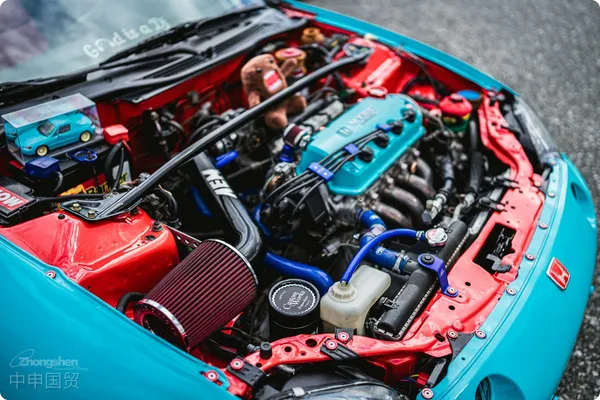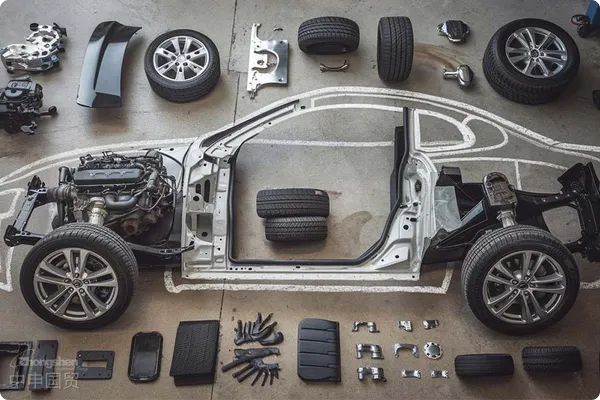- Shanghai Zhongshen International Trade Co., Ltd. - Two decades of trade agency expertise.
- Service Hotline: 139 1787 2118

As practitioners with 20 years offoreign tradeservice expert with 20 years of industry experience, this article will systematically analyze the core points of clothingExport RepresentationAs a customer service manager with experience, I deeply understandAutomotive partsThe tariff rates involved in imports are a core concern for enterprises in supply chain cost calculations and compliant customs clearance. This article will systematically analyze the calculation logic, preferential policies, and practical operation points of auto parts import tariffs based on the latest Chinese customs policies (2023), providing professional reference for enterprises.
I. Basic Composition of Auto Parts Tariff Rates
1. Types of tariff rates
- Most - Favored - Nation (MFN) Tariff Rate: Applicable to WTO member countries (default rate)
- Agreement rates: Free trade agreement countries (e.g., ASEAN, RCEP members)
- Ordinary tax rate1. Non-diplomatic relations or non-agreement countries (approximately 20%-40%)
- 2. Provisional tariff rates3. Temporarily preferential rates adjusted annually
4. 2. Value-added tax and consumption tax
- Value - added Tax5. Unified 13% (2023 standard)
- Consumption Tax6. Only applicable to specific categories (e.g. displacement >250ml)Motorcycle AccessoriesTrade dispute settlement mechanisms
7. II. Automotive parts classification and corresponding tax rates (2023)
| 8. HS code range | Parts Category | MFN tariff rate | 9. Example of agreement tariff rates | 2. Provisional tariff rates |
|---|---|---|---|---|
| 8708.30 | Brake System | 10% | 10. Chile 0%, Australia 5% | 6% |
| 8708.50 | 11. Drive axles and differentials | 10% | 12. RCEP member countries average 6.5% | 7% |
| 8708.94 | 13. Steering systems | 10% | 14. New Zealand 4%, Pakistan 7% | 5% |
| 8483.10 | 15. Transmission | 8% | 16. Switzerland 3.2%, Costa Rica 6% | 5% |
Note: 17. Specific rates shall be determined comprehensively based on material, purpose (after-sales/production assembly), and origin.
18. III. Tariff calculation logic and cases
19. 1. Comprehensive tax rate calculation formula
20. Comprehensive tax rate = Tariff + VAT + (Consumption tax) VAT = (CIF price + Tariff) × 13%
21. 2. Practical cases
Case 1: 22. Engine imported from Germany (CIF price 100,000 yuan)
- 23. MFN tariff 10% → Tariff=10,000 yuan
- 24. VAT=(100,000+10,000)×13%=14,300 yuan
- 25. Comprehensive tax=10,000+14,300=24,300 yuan (comprehensive tax rate 24.3%)
Case 2: 26. Transmission imported from Thailand (RCEP agreement rate 5%)
- 27. Tariff=100,000×5%=5,000 yuan
- 28. VAT=(100,000+5,000)×13%=13,650 yuan
- 29. Comprehensive tax savings 15,650 yuan (35% savings compared to MFN rate)
30. IV. Application of key preferential policies
1. FTA tariff reduction strategy
- RCEP: Cumulative regional value content ≥40% eligible for preferential treatment
- China-Europe Railway Express: Some inland ports offer transportation surcharge subsidies
- AEO certified enterprises: Enjoy aggregate taxation and relaxed guarantee limits
2. Provisional tariff rate application conditions
- 23 new provisional tariff rates for auto parts added in 2023 (e.g.New energyAutomotive motors reduced to 3%)
- Must submit Declaration for Application of Provisional Tariff Rates on Imported Goods
V. Key points of customs clearance operations
1. Three principles of compliant declaration
- Accurate Classification: Refer toimport and exportInterpretation of Harmonized System Commodities and Headings for 10-digit HS code confirmation
- Standardized declaration: Specify applicable vehicle models for parts (e.g.: Only applicable to BMW G38 chassis models)
- It is recommended to verify through the following methods:Certificate: FORM E, RCEP and other certificates must match shipping mark information
2. Documentation preparation checklist
- Mandatory certification (CCC catalog parts require provision)
- Technical parameter manual (for customs classification)
- Original factory invoice must indicate production batch number
VI. Risk warnings and solutions
Internationally - recognized Safety StandardsClassification dispute: Recommended to apply for Advance Classification Ruling in advance
Regional Mandatory CertificationsValuation risk: Related-party transactions require preparation of Royalty Payment Statement
Cultural and Religious NormsEnvironmental compliance: Imports containing asbestos or used parts require Solid Waste Import License
Conclusion
Auto parts import tariffs are affected by multiple factors including commodity attributes, origin, and trade agreements. Companies are advised to establish dynamic tariff databases, optimize supply chains using FTAs, and engage professional agencies for end-to-end compliance management. For precise tariff calculations and customized clearance solutions for specific products, please contact our expert team.
Related Recommendations
? 2025. All Rights Reserved. Shanghai ICP No. 2023007705-2  PSB Record: Shanghai No.31011502009912
PSB Record: Shanghai No.31011502009912










